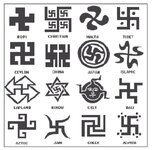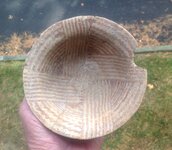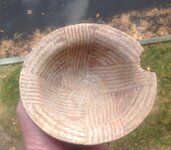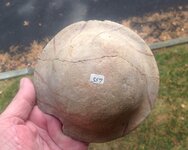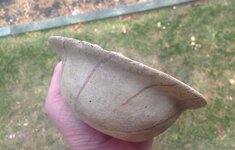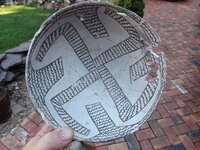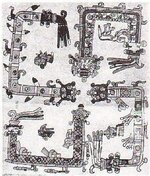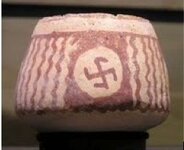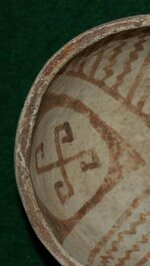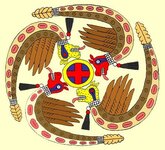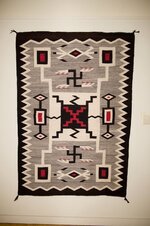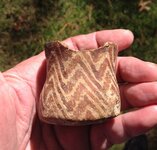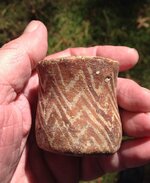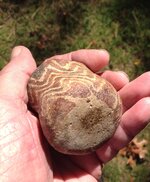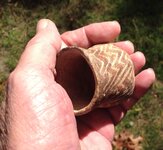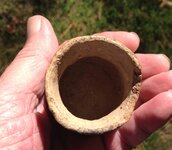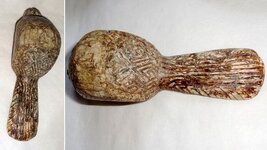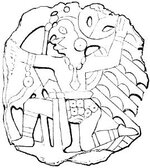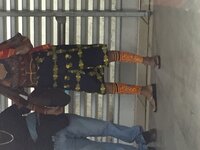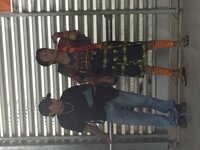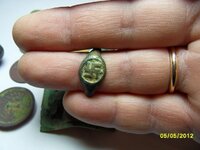Charl
Silver Member
This Hohokam red on buff bowl was found on private property near Queen Creek, Az. It dates c. 750-950 A.D. I obtained it because it has a version of a right handed swastika painted in the interior. Always been fascinated with that symbol, not because of it's' most regrettable Nazi association, but because it is a far more ancient symbol found throughout the world. The oldest example known is on a European bone implement that is 15,000 years old. Here are a couple of pages describing that distribution. To the Hopi of northern Az., it was a migration symbol, with the center representng the Hopi Mesas.
Partial swastika petroglyphs are said to represent a clan that is showing how far it has traveled on the migrations dictated by the creator; if the swastika is missing an arm, the clan had not completed their prescribed migration pattern. This is according to the Hopi informants that advised Frank Waters for his classic "Book of the Hopi". In one form or another, the swastika is a common design element on southern Az. Hohokam pottery as well. This can also be seen as a form of the Four Directions symbol. Found among other NA tribes as well, not just the SW and Mesoamerica.
http://www.theorionzone.com/swastikas_hopi_gary_david.pdf
http://www.ancient-origins.net/myths-legends/symbol-swastika-and-its-12000-year-old-history-001312
A recent article:
How the world loved the swastika, until Hitler stole it.
http://www.bbc.com/news/magazine-29644591
In Feb., 1940, to protest Hitler's adaptation of this sacred symbol, the Hopi, Navajo, Papago, and Apache tribes all signed an agreement not to use the swastika symbol in their artwork. I doubt that agreement is still in place.
Partial swastika petroglyphs are said to represent a clan that is showing how far it has traveled on the migrations dictated by the creator; if the swastika is missing an arm, the clan had not completed their prescribed migration pattern. This is according to the Hopi informants that advised Frank Waters for his classic "Book of the Hopi". In one form or another, the swastika is a common design element on southern Az. Hohokam pottery as well. This can also be seen as a form of the Four Directions symbol. Found among other NA tribes as well, not just the SW and Mesoamerica.
http://www.theorionzone.com/swastikas_hopi_gary_david.pdf
http://www.ancient-origins.net/myths-legends/symbol-swastika-and-its-12000-year-old-history-001312
A recent article:
How the world loved the swastika, until Hitler stole it.
http://www.bbc.com/news/magazine-29644591
In Feb., 1940, to protest Hitler's adaptation of this sacred symbol, the Hopi, Navajo, Papago, and Apache tribes all signed an agreement not to use the swastika symbol in their artwork. I doubt that agreement is still in place.
Attachments
Last edited:
Upvote
0


